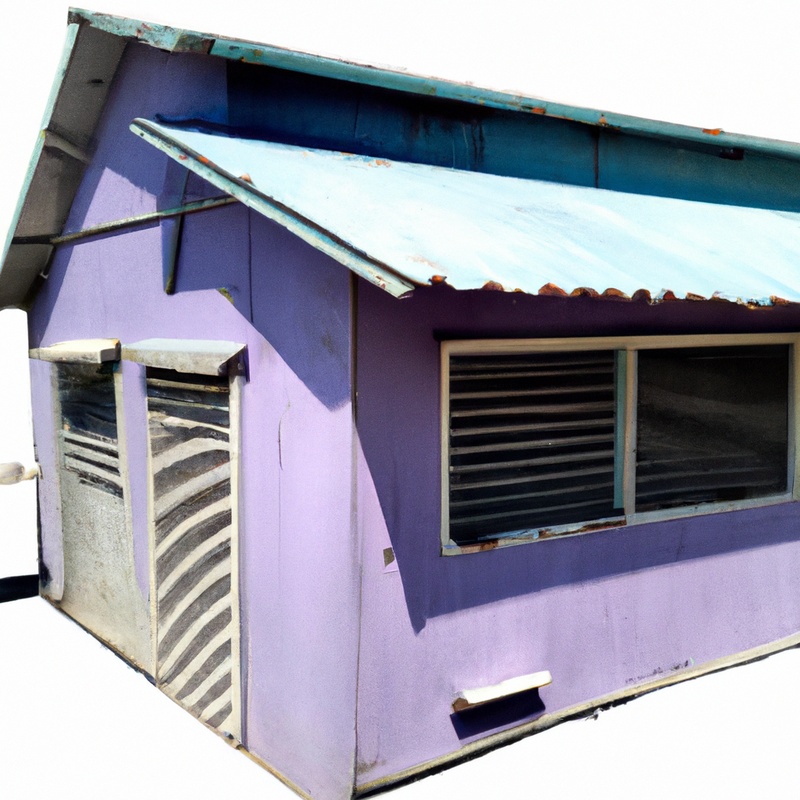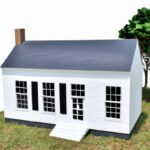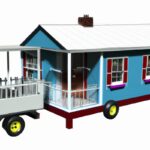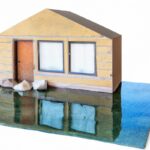Key Takeaways:
- Tiny houses on wheels are subject to a range of legal requirements, including zoning laws, building codes, and RV regulations.
- The specific legal requirements for a tiny house on wheels can vary greatly depending on location, making it essential to research and comply with local regulations.
- Permits and inspections may be necessary for tiny houses on wheels to ensure compliance with safety standards and other legal requirements.
- It is crucial to consult with local authorities and legal professionals to navigate the complex legal landscape surrounding tiny houses on wheels.
Have you ever dreamed of ditching the traditional bricks and mortar and living in a cozy, mobile home?
Well, tiny houses on wheels might be the answer you’ve been searching for! But before you take the leap into the world of mobile living, it’s important to understand the legal requirements that come with it.
From building regulations and zoning laws to permits and certifications, there’s a lot to consider.
In this article, I’ll guide you through the maze of legal red tape, helping you navigate the path to tiny house freedom.
So, buckle up and get ready to hit the road to legal tiny living!
| Legal Requirements for a Tiny House on Wheels | |
| Aspect | Requirement |
| Building Codes | Must comply with local building codes and standards |
| Zoning Regulations | Check zoning laws and obtain necessary permits |
| Size and Height Restrictions | Ensure the tiny house meets the maximum size and height allowed |
| Road Rules | Follow road regulations when towing the tiny house |
| Utility Connections | Confirm access to water, electricity, and waste disposal |
| Occupancy | Verify the allowed duration of stay in a particular location |
| Foundation | Consider the type of foundation required by regulations |
| Insurance | Obtain proper insurance coverage for the tiny house |
| Taxation | Understand the tax implications of owning a tiny house |
Definition of a Tiny House on Wheels
Explanation of what constitutes a tiny house on wheels
A tiny house on wheels is exactly what it sounds like: a small, portable dwelling built on a trailer.
It is designed to be compact and efficient, with all the necessary amenities for comfortable living.
Typically, a tiny house on wheels will have a living space, a kitchen, a bathroom, and a sleeping area.
The size of a tiny house on wheels can vary, but it is generally around 100 to 400 square feet.
This type of housing is popular among those seeking a minimalist lifestyle or looking for a more affordable and sustainable housing option.
Differentiating factors between a tiny house on wheels and a traditional home
The main factors that differentiate a tiny house on wheels from a traditional home are size, mobility, and design flexibility.
- Size: A tiny house on wheels is typically smaller, ranging from 100 to 400 square feet, while a traditional home is much larger.
- Mobility: Unlike a traditional home, a tiny house on wheels can be moved to different locations, giving you the freedom to travel or change your living environment easily.
- Design flexibility: Tiny houses on wheels often feature innovative and creative designs to maximize limited space, while traditional homes have more standardized layouts.
These factors make tiny houses on wheels a unique and customizable housing option for those seeking a simpler and more flexible lifestyle.
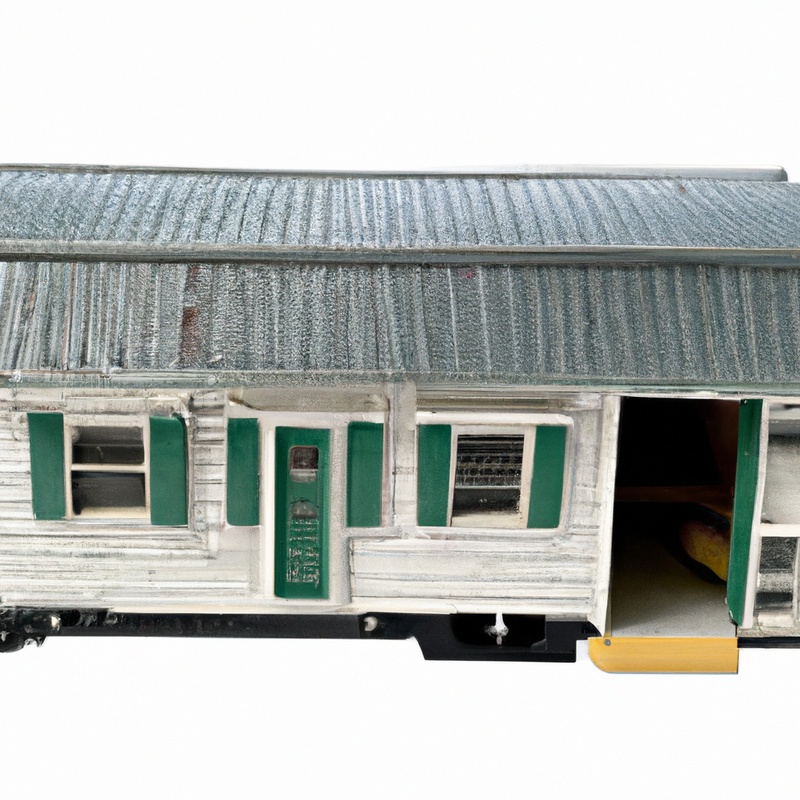
Building Regulations and Codes for Tiny Houses on Wheels
Overview of building regulations for tiny houses on wheels
Building regulations for tiny houses on wheels vary depending on the jurisdiction. Generally, these regulations focus on ensuring the safety and structural integrity of the tiny house.
Some common requirements include compliance with local building codes, obtaining necessary permits, and adherence to specific size and weight limitations.
It is important to research and understand the specific regulations in your area before building or living in a tiny house on wheels. Consulting with local authorities or a professional who is knowledgeable about building codes can help ensure legal compliance.
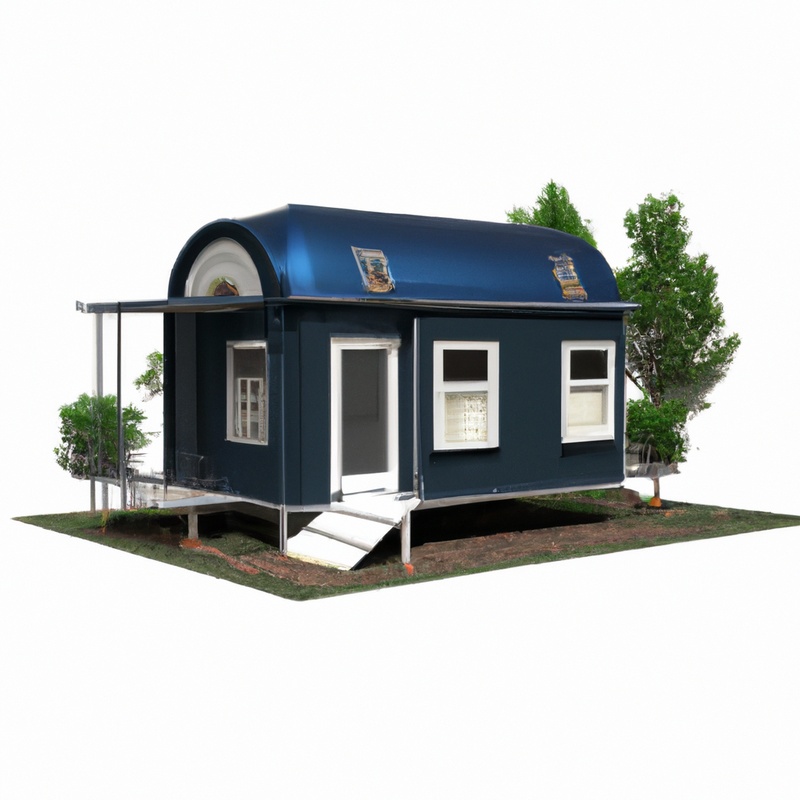
Requirements for trailer classification and weight restrictions
When it comes to trailer classification and weight restrictions for tiny houses on wheels, there are a few requirements to keep in mind. Firstly, the trailer used for the tiny house must meet certain criteria, such as being roadworthy and having proper lighting and braking systems.
Additionally, there may be specific weight limits that the trailer must adhere to, which can vary depending on your location.
It’s important to research and comply with these regulations to ensure the safety and legality of your tiny house on wheels.
Compliance with structural and safety standards
Compliance with structural and safety standards is of utmost importance when it comes to building a tiny house on wheels. These standards ensure that the structure is sturdy and safe to live in.
Here are some key requirements to consider:
- Foundation: The trailer that the tiny house is built on must meet certain specifications for weight capacity and size.
- Structural Integrity: The construction should adhere to building codes, including proper framing, insulation, and roofing.
- Electrical and Plumbing: The installation of electrical and plumbing systems must meet safety regulations to prevent hazards.
- Fire Safety: The tiny house should have smoke detectors, fire extinguishers, and proper ventilation to reduce fire risks.
- Window and Door Safety: The windows and doors should be securely installed, have proper locks, and meet egress requirements.
- Safety Hazards: Minimize potential hazards, such as sharp corners, stairs without handrails, or unsecured furniture.
Meeting these standards helps ensure the safety and integrity of your tiny house on wheels, providing peace of mind and minimizing potential risks. Always consult local building codes and regulations to ensure compliance.
Zoning and Land Use Laws for Tiny Houses on Wheels
Examination of zoning regulations and restrictions
Zoning regulations and restrictions play a crucial role in determining where a tiny house on wheels can be parked and lived in.
Each jurisdiction has its own specific rules regarding the size, location, and use of these unique dwellings.
It is important to thoroughly examine the zoning regulations in your area to ensure compliance.
Factors such as minimum lot size, setbacks from property lines, and permitted land uses may impact where you can park your tiny house.
Additionally, restrictions on tiny houses as primary residences or limitations on the duration of occupancy may apply.
Be sure to check with your local planning department for the specific zoning requirements in your area.
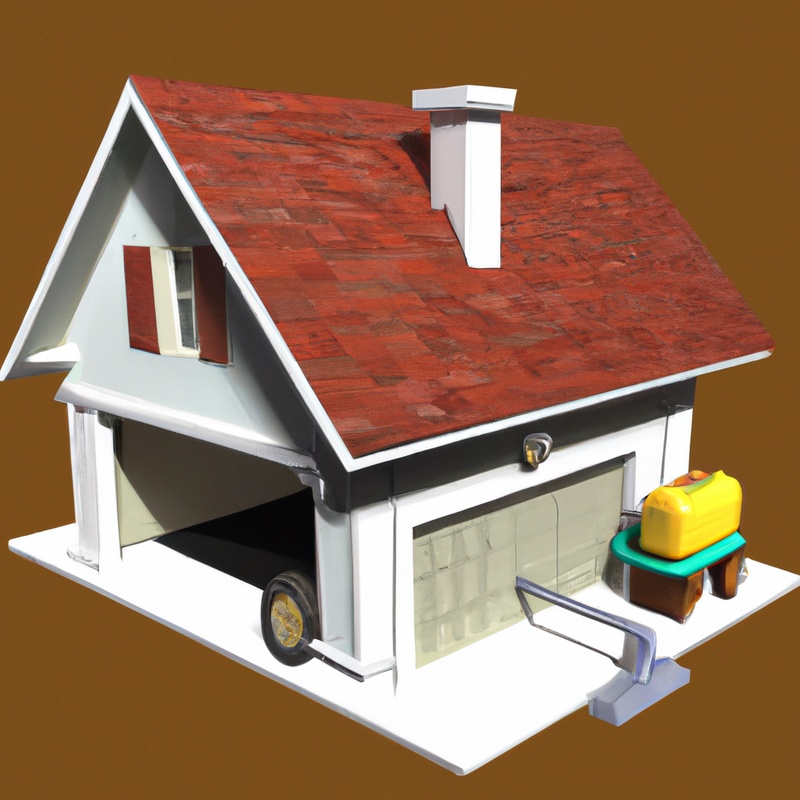
Considerations for parking and locating a tiny house on wheels
When parking and locating a tiny house on wheels, there are a few key considerations to keep in mind. Firstly, zoning regulations play a significant role in determining where you can park your tiny house.
It’s important to research and understand the zoning laws in your area to ensure compliance.
Additionally, you’ll need to find a suitable location with access to utilities such as water, electricity, and sewer connections. It’s also crucial to consider any potential challenges related to land use laws, such as size restrictions or restrictions on permanent residency.
By doing your due diligence and planning ahead, you can find a safe and legal place to park your tiny house on wheels.
Overview of land use laws and potential challenges
Land use laws play a crucial role in determining where and how a tiny house on wheels can be situated. These laws vary greatly depending on the location.
Some potential challenges that may be encountered include:
- Zoning restrictions: Certain zoning regulations may limit or prohibit the placement of tiny houses on wheels in certain areas. It is important to research and understand the zoning requirements in your specific location.
- Minimum square footage requirements: Some jurisdictions have minimum square footage requirements for dwellings. Tiny houses on wheels may not meet these requirements and may not be allowed as a result.
- Access to utilities: Many land use laws require access to utilities such as water, electricity, and sewer connections. In certain areas, it may be challenging to find locations that provide these services for tiny houses on wheels.
- Parking and location restrictions: Some areas have restrictions on where a tiny house on wheels can be parked or located. These restrictions may include setbacks from property lines, designated parking areas, or limitations on the duration of occupancy.
It is important to research and understand the specific land use laws in your area before deciding to build or park a tiny house on wheels. Consulting with local authorities or seeking legal advice can help navigate these potential challenges effectively.
Utilities and Services for Tiny Houses on Wheels
Availability of utilities such as water, electricity, and sewer connections
Water, electricity, and sewer connections are essential utilities for a tiny house on wheels. However, the availability of these utilities can vary depending on the location.
In urban areas, it is usually easier to access water and electricity connections, while sewer connections may require a nearby hookup or the use of a holding tank.
In more remote or rural areas, off-grid options such as well water and solar power may be necessary. It is important to research and understand the local regulations and restrictions regarding accessing and using these utilities for a tiny house on wheels.
Overview of off-grid options and self-sustaining systems
When it comes to living off-grid in a tiny house on wheels, there are several options for self-sustaining systems.
Solar power is a popular choice, providing electricity for lighting and appliances.
Rainwater collection systems can supply water for everyday needs.
Composting toilets are a sustainable alternative to traditional plumbing.
Additionally, propane or wood-burning stoves can be used for heating and cooking.
These off-grid options allow tiny house owners to be self-sufficient and minimize their impact on the environment.
Legal considerations for accessing utilities and services
When it comes to accessing utilities and services for your tiny house on wheels, there are a few important legal considerations to keep in mind. Firstly, you need to ensure that your tiny house is legally classified and recognized as a dwelling.
This is crucial because it determines whether you can connect to public utilities like water, electricity, and sewer.
Secondly, you’ll need to comply with any local regulations or zoning ordinances that govern the installation and connection of utilities. Some areas may have specific requirements for tiny houses, such as minimum square footage or certain safety standards.
Lastly, it’s important to explore off-grid options and self-sustaining systems if you plan to live in a location where access to public utilities is limited or restricted.
This may involve incorporating alternative energy sources like solar panels or rainwater collection systems. By considering these legal aspects and ensuring compliance, you can enjoy the conveniences of utilities and services for your tiny house on wheels.
Permits and Certifications for Tiny Houses on Wheels
Permits required for construction, parking, and occupancy
When it comes to building a tiny house on wheels, there are certain permits you’ll need to consider.
For construction, you may need a building permit from your local government.
This ensures that your tiny house meets safety and building code requirements.
In terms of parking, you’ll need to check zoning regulations to determine where you can legally park your tiny house.
Some areas may have specific requirements or restrictions.
Lastly, for occupancy, you may need to obtain an occupancy permit or a certificate of occupancy.
This ensures that your tiny house meets all health and safety regulations before you can live in it.
Remember to check with your local government for specific permit requirements in your area.
Overview of certifications and inspections needed
In order to ensure the safety and compliance of a tiny house on wheels, there are certain certifications and inspections that are needed.
Here is an overview of what you may need:
- RVIA Certification: This certification ensures that your tiny house meets the safety standards set by the Recreational Vehicle Industry Association.
- Electrical Inspection: An electrical inspection is crucial to ensure that the electrical system in your tiny house is safe and up to code.
- Plumbing Inspection: A plumbing inspection ensures that the plumbing system in your tiny house is installed correctly and meets the necessary standards.
- Fire Safety Inspection: A fire safety inspection will check that your tiny house has the required fire suppression systems, alarms, and escape routes.
- Building Inspection: Some jurisdictions may require a building inspection to ensure that your tiny house meets building codes for habitable structures.
Remember, the specific certifications and inspections needed may vary depending on your location, so it’s important to check with your local authorities to ensure compliance.
Legal compliance for safety, fire, and health regulations
Legal compliance for safety, fire, and health regulations is essential when it comes to tiny houses on wheels.
To ensure safety, it is crucial to follow building codes and regulations, including structural and safety standards.
Fire safety measures should be implemented, such as smoke detectors and fire extinguishers.
Health regulations may include proper ventilation and sanitation systems to maintain a healthy living environment.
Inspections and certifications may be required to ensure compliance with these regulations.
Insurance and Financing for Tiny Houses on Wheels
Insurance options for tiny houses on wheels
When it comes to insuring your tiny house on wheels, there are a few options to consider.
- Personal Property Insurance: This type of insurance covers the belongings inside your tiny house, such as furniture and appliances. It protects against theft, fire, and other covered events.
- Liability Insurance: Liability insurance provides financial protection in case someone is injured on your property or if you cause damage to someone else’s property.
- RV Insurance: Some insurance companies offer specialized RV insurance policies for tiny houses on wheels. These policies typically provide coverage for both the structure and personal belongings.
- Tiny House Insurance: There are insurance companies that specifically cater to insuring tiny houses on wheels. These policies may offer coverage for theft, fire, structural damage, and more.
Remember to carefully read and understand the terms and coverage limits of any insurance policy you choose. It’s important to select a policy that best suits your specific needs and provides adequate protection for your tiny house on wheels.
Financing and loan considerations for building or purchasing a tiny house on wheels
When it comes to financing and loan considerations for building or purchasing a tiny house on wheels, there are a few things to keep in mind.
Firstly, since tiny houses on wheels are considered non-traditional homes, obtaining a traditional mortgage may not be an option.
Instead, you may need to explore alternative financing options such as personal loans, RV loans, or construction loans.
Additionally, building or purchasing a tiny house on wheels may require a smaller loan amount compared to a traditional home, but interest rates and terms can vary.
It’s important to shop around and compare lenders to find the best loan for your needs.
Finally, be prepared to provide detailed plans, cost estimates, and evidence of your ability to repay the loan to lenders.
Implications of insurance and financing on legal requirements
The implications of insurance and financing on legal requirements for a tiny house on wheels are significant. Firstly, insurance coverage is crucial to protect your investment and ensure compliance with local regulations.
It’s important to research and obtain the appropriate insurance policies tailored for tiny houses on wheels.
Secondly, when it comes to financing, lenders may have specific requirements for a tiny house on wheels, including documentation of compliance with building codes and regulations. It’s crucial to understand these implications and meet the necessary legal requirements to ensure a smooth process for insurance and financing.
Final Verdict
The legal requirements for a tiny house on wheels can be complex and vary depending on various factors such as building regulations, zoning and land use laws, utilities and services, permits and certifications, and insurance and financing. It is crucial for individuals interested in owning a tiny house on wheels to thoroughly research and understand these requirements to ensure compliance and a smooth transition to tiny house living.
Consulting with professionals and seeking expert advice can also help navigate the legal landscape and make informed decisions.
With the right knowledge and preparation, one can enjoy the benefits of a tiny house on wheels while staying within the bounds of the law.
